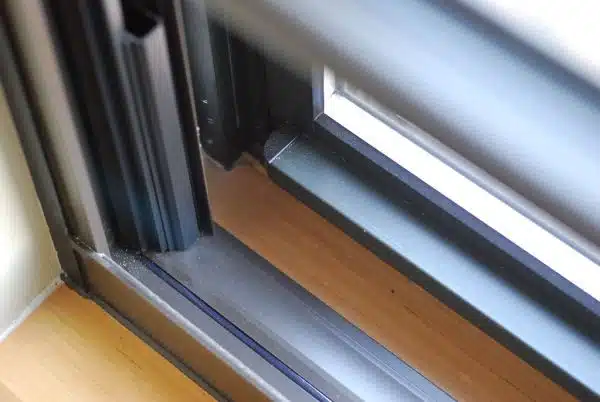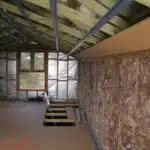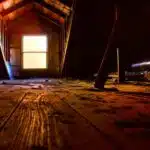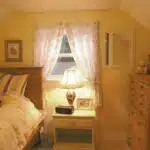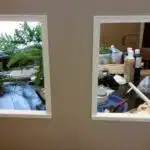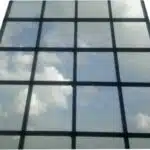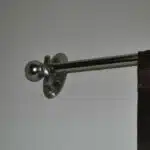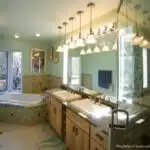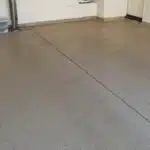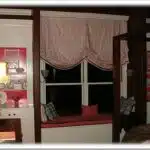Soundproofing windows is a crucial step to achieving a peaceful and quiet environment. Unwanted noise can be disturbing for individuals, hindering their ability to concentrate or relax. To combat this issue, soundproofing technology has been developed to block out external noise from entering homes, offices, and other buildings. As an acoustics engineer, it is my responsibility to provide insights on how to effectively soundproof windows.
The process of soundproofing windows involves the use of materials that absorb or reflect sound waves. Soundproofing treatments can be applied on existing windows or installed as new components during construction. The ideal method depends on the level of noise reduction required and the type of window in use. In this article, we will explore different materials and techniques used for soundproofing windows that can help create a more peaceful environment for those who value tranquility in their daily lives.
Understanding Sound Waves And Noise Pollution
It’s a noisy world out there. The constant hum of traffic, blaring horns, and chatty neighbors can all contribute to an overwhelming amount of noise pollution. Understanding sound waves is critical to taking control of this environmental impact.
Sound waves are produced by vibrations that travel through the air. These vibrations can be measured in decibels (dB), with higher dB levels indicating louder sounds. Noise pollution occurs when these sound waves disrupt our daily activities and affect our health and well-being.
As an acoustics engineer, my goal is to help you navigate the complexities of soundproofing windows. By understanding the mechanics of sound waves, we can develop strategies to mitigate their impact on your life. So let’s dive into the science behind noise pollution and explore how we can address it effectively.
As we assess your soundproofing needs, it’s important to keep in mind the different types of noise that exist in your environment. From low-frequency rumbling to high-pitched squeals, each type of noise requires a unique approach for effective soundproofing. In the next section, we will delve deeper into identifying these sources of noise and developing tailored solutions for your home or office space.
Assessing Your Soundproofing Needs
Understanding sound waves and noise pollution is crucial in assessing acoustic needs for soundproofing windows. When it comes to soundproofing, there are different techniques that can be used depending on the level of noise pollution and the desired outcome. Assessing your soundproofing needs involves determining what type of noise you are dealing with, how much of it you want to block out, and where it is coming from.
One technique for assessing acoustic needs is conducting a sound test. This involves using specialized equipment to measure the decibel levels of different sounds around your home or office. By identifying which areas have the highest levels of noise pollution, you can determine where to focus your soundproofing efforts. Another technique is conducting a visual inspection of your windows. Look for gaps or cracks in the window frame or between panes of glass that may be allowing noise to seep through.
Overall, assessing acoustic needs for window soundproofing requires a comprehensive approach that takes into account both the type and level of noise pollution present. By using techniques such as conducting sound tests and inspecting windows, you can identify problem areas and choose the right materials to effectively block out unwanted noise. In the next section, we will discuss choosing the right soundproofing materials that will help achieve optimal results in reducing noise pollution in your space.
Choosing The Right Soundproofing Materials
As the saying goes, “prevention is better than cure.” This phrase can be applied when it comes to choosing the right soundproofing materials for your windows. There are various types of soundproofing materials available in the market today. These include acoustic foam panels, mass loaded vinyl (MLV), window inserts, and soundproof curtains.
Acoustic foam panels are commonly used to reduce noise levels by absorbing sound waves. They are cost-effective solutions that come in different sizes and shapes. MLV, on the other hand, is a heavy material that can be installed directly onto the window glass. It works by blocking noise from entering through the window. Window inserts offer similar benefits as MLV but can be removed easily when needed.
Soundproof curtains are another popular choice for soundproofing windows. They are made from dense materials such as fiberglass or polyester and have multiple layers to absorb and block noise. Soundproof curtains also offer added benefits such as insulation and light control. When choosing the right soundproofing materials for your windows, consider your budget, desired level of noise reduction, and ease of installation.
Transitioning into installing soundproof curtains, it is important to note that they can be an effective solution for reducing noise levels in your home or office space. In the next section, we will discuss how to properly install these curtains to maximize their benefits in creating a quieter environment.
Installing Soundproof Curtains
Now that you have chosen the right soundproofing materials for your windows, it’s time to move on to the next step: installing soundproof curtains. Soundproof curtains are a great addition to any room as they not only block out sound but also improve the overall look and feel of your space. However, it is important to choose the best curtains for soundproofing as not all curtains are created equal.
When choosing soundproof curtains, look for those that are made with heavy materials such as velvet or suede. These materials absorb more sound waves than lighter fabrics such as cotton or linen. Additionally, curtains with multiple layers of fabric and a tight weave will provide better sound insulation.
Installing soundproof curtains without damaging your windows is easy with the right tools and techniques. First, measure your window frame accurately, allowing for an extra inch on each side for maximum coverage. Next, install curtain rods or tracks following the manufacturer’s instructions carefully. Finally, hang your curtains securely on the rods or tracks ensuring they overlap in the center to prevent any gaps.
Incorporating soundproof curtains into your window insulation plan can significantly reduce noise levels in your home or office. However, if you want even more insulation, consider adding window inserts. Window inserts use a double pane of glass to create an air pocket that reduces outside noise and improves energy efficiency. With these additional steps in place, you can enjoy a quieter and more comfortable living environment.
Adding Window Inserts For Extra Insulation
Window inserts can be an effective solution for soundproofing windows. These inserts are typically made of materials such as acrylic or laminated glass and can be fitted into the existing window frame to create an additional layer of insulation. There are two main types of window inserts: removable and permanent.
Removable window inserts are a cost-effective solution for those who require occasional soundproofing. These inserts can easily be installed and removed when necessary, making them a flexible option. They come in various sizes and shapes, allowing them to fit almost any type of window frame. On the other hand, permanent window inserts offer a more long-term solution for those who require constant soundproofing. Although they are more expensive than removable options, they provide superior insulation against noise pollution.
Overall, window insert options offer a practical and affordable solution for homeowners looking to improve their soundproofing efforts. Whether you opt for removable or permanent alternatives, these options can significantly reduce outside noise infiltration into your home while improving your overall comfort levels. By choosing the right option for your needs, you can enjoy a quieter home environment without breaking the bank.
As mentioned earlier, there is still one more step you can take to further improve the effectiveness of your soundproofing efforts – using acoustic sealant around the edges of your windows. This will help to fill any gaps that may have been missed during installation and ensure that no noise is able to seep through. In the next section, we will discuss how this simple but effective technique can make all the difference in achieving maximum soundproofing results.
Using Acoustic Sealant For Improved Soundproofing
Acoustic sealant is an effective method to improve soundproofing for windows. However, some alternatives can also provide similar results. The challenge with soundproofing is that it requires a combination of techniques to achieve the desired outcome.
One alternative to acoustic sealant is weatherstripping tape. This type of tape is designed to create an airtight seal between the window and frame, which can help to reduce noise transmission. Another option is using foam gaskets or neoprene strips that provide similar benefits.
Another challenge when applying acoustic sealant or other soundproofing methods is ensuring that there are no gaps or cracks around the window area. It’s important to thoroughly inspect the window frame and surrounding areas before applying any materials. Any small openings can significantly impact the effectiveness of the soundproofing process.
To ensure maximum effectiveness, it’s recommended to use a combination of techniques such as acoustic sealant, weatherstripping tape, and foam gaskets or neoprene strips in conjunction with each other. This will help to address any potential gaps or cracks while creating a more comprehensive barrier against unwanted noise.
Four recommended steps for using acoustic sealant:
- Clean and dry the window frame thoroughly before application.
- Apply a generous amount of acoustic sealant around all edges of the window frame.
- Use a putty knife or caulking gun to smooth out any bumps or uneven spots.
- Allow ample time for drying before testing the effectiveness of the soundproofing solution.
With these steps in mind, it’s possible to effectively use acoustic sealant for improved soundproofing on windows. However, there are also alternative methods available that should be considered based on individual needs and challenges. In the next section, we will explore how applying soundproofing paint can further enhance noise reduction in windows without compromising aesthetics.
Applying Soundproofing Paint
Soundproofing paint is a popular alternative to traditional soundproofing methods. It is designed to reduce noise and vibration by adding mass to the surface of a wall or window. Soundproofing paint is typically made from a combination of latex, ceramic microspheres, and other sound-absorbing materials. It can be applied to any surface using a brush or roller.
One of the benefits of soundproofing paint is that it is easy to apply and does not require any special equipment or skills. This makes it an ideal DIY soundproofing hack for homeowners who want to reduce noise levels in their homes without breaking the bank. However, it is important to note that soundproofing paint is not as effective as other soundproofing methods such as installing acoustic panels or upgrading windows.
There are several alternatives to soundproofing paint that homeowners can consider if they are looking for more effective ways of reducing noise levels in their homes. These include upgrading to double or triple glazed windows, installing acoustic panels on walls and ceilings, and sealing gaps around doors and windows. While these options may be more expensive than using soundproofing paint, they offer greater noise reduction benefits in the long run.
To further improve the sound insulation of your home, upgrading to double or triple glazed windows may be your next step. Double glazing consists of two panes of glass separated by an air gap while triple glazing has three panes with two air gaps. The extra layer(s) help block out more noise than single-pane windows. Additionally, these types of windows also offer thermal insulation benefits which can help reduce energy bills by keeping heat inside during winter months and outside during summer months.
Upgrading To Double Or Triple Glazed Windows
As we continue to explore methods for soundproofing windows, upgrading to double or triple glazed windows presents itself as a viable option. These types of windows are designed with two or three panes of glass separated by an air gap, providing better insulation against noise pollution. This is because the air gap between panes creates a barrier that reduces the transfer of sound waves.
In addition to being an effective soundproofing solution, upgrading to double or triple glazed windows has other benefits. One such advantage is cost-effective alternatives that could provide adequate noise reduction without breaking the bank. Homeowners can also consider energy efficiency considerations when selecting their glazing options. This means choosing the right type of glass and frame material that provides insulation while reducing energy consumption.
When it comes to upgrading to double or triple glazed windows, homeowners should factor in the cost and benefits before making a decision. While this option may be more expensive than others, it could offer long-term energy savings and increased property value. For those who want to improve their home’s acoustics while still maintaining its aesthetic appeal, installing secondary glazing is another option worth exploring.
Installing Secondary Glazing
Secondary glazing is a popular method for soundproofing windows because it provides an additional layer of insulation against noise. This technique involves installing an extra pane of glass or acrylic sheet on the inside of your existing window frame. Secondary glazing benefits include reducing external noise levels by up to 80%, improved energy efficiency, and added security. The main advantage of secondary glazing is that it can be installed without replacing the original windows.
DIY installation tips for secondary glazing involve measuring your window size accurately and selecting the appropriate materials based on your budget and needs. It’s recommended to use a thicker glass or acrylic sheet for better insulation against noise. You may also consider using magnetic tape or adhesive strips for easy removal and reinstallation when necessary. To minimize gaps between the panes, you may use foam tape or silicone sealant.
By utilizing secondary glazing, you can significantly reduce external noise levels, improve energy efficiency, and add an extra layer of security to your home. These benefits make secondary glazing a popular option among homeowners who want to enhance their living space’s comfort and safety while reducing external noise pollution. In the next section, we will discuss another soundproofing technique that involves using soundproofing films to further reduce noise levels in your home.
Using Soundproofing Films
Soundproofing films are a popular option for those looking to reduce noise transmission through their windows. These films are typically made from materials such as vinyl or polyester and are applied directly onto the window glass. Applying soundproofing films can be an effective way to reduce noise levels, but it is important to follow some tips and tricks to ensure the best results.
When comparing soundproofing films, there are several factors to consider. One of the most important is the film’s Sound Transmission Class (STC) rating, which measures how much sound is blocked by the material. Higher STC ratings indicate better sound blocking performance. Additionally, it is important to consider the film’s thickness and whether it contains additional layers or coatings that may enhance its effectiveness.
To help compare different options, here is a table outlining some common types of soundproofing films and their characteristics:
| Type of Film | STC Rating | Thickness | Additional Features |
|---|---|---|---|
| Vinyl | 30-35 | 4-7 mils | UV protection |
| Polyester | 26-30 | 1-2 mils | Scratch resistance |
| Ceramic | 45-50 | 8+ mils | Heat reduction |
By considering these factors and comparing different products, you can choose a soundproofing film that best meets your needs. Keep in mind that while applying these films can be done yourself, professional installation may provide better results.
Transition: While applying soundproofing films can be effective, sometimes a more comprehensive solution is needed. In the next section, we will discuss how to build a soundproof window plug for even greater noise reduction.
Building A Soundproof Window Plug
Using soundproofing films can be a cost-effective and easy way to reduce noise transmission through windows. However, for those who want a more permanent solution, building a soundproof window plug may be the way to go.
A soundproof window plug is essentially a frame that fits snugly into the interior of an existing window frame. It is typically made from materials such as plywood or medium-density fiberboard (MDF), which have good sound-blocking properties. The plug can be covered with acoustic foam or other materials to further increase its soundproofing capabilities.
Some benefits of using a soundproof window plug include:
- Improved sleep quality by reducing external noise
- Increased privacy by blocking out unwanted sounds from the outside world
- Better concentration for work or studying in noisy environments
- Enhanced home value by adding an attractive and functional feature to your property
While there are many DIY alternatives for creating soundproof window treatments, building a custom-fit window plug offers superior performance and durability. By incorporating acoustic foam or other high-quality materials, homeowners can create a lasting solution that will provide significant noise reduction for years to come. In the next section, we will explore some tips for making DIY soundproof window treatments that are effective and affordable.
Making Diy Soundproof Window Treatments
Creating Customized DIY Soundproof Window Treatments
Soundproofing techniques for windows can be easily achieved through the use of various DIY window treatments. These treatments are customizable, cost-effective, and can significantly reduce unwanted noise from outside sources. Whether it is traffic noise or loud neighbors, these window treatments can provide a peaceful environment inside your home or office.
One of the simplest ways to create a soundproof window treatment is by using acoustic curtains. These curtains are made with dense materials that absorb sound waves, reducing the level of noise that enters through the window. Another effective DIY solution is using double-pane windows with an air gap between them. This setup creates an extra layer of insulation that reduces sound transmission while also improving energy efficiency.
Another popular option is to use a combination of sound-absorbing panels and acoustic sealant to reduce sound transmission through gaps in the window frame. The table below shows some commonly used materials for creating DIY soundproof window treatments along with their effectiveness in reducing noise levels.
| Material | Effectiveness |
|---|---|
| Acoustic Curtains | Good |
| Double-Pane Windows with Air Gap | Better |
| Sound-Absorbing Panels + Acoustic Sealant | Best |
By utilizing these DIY window treatment techniques, you can effectively reduce the amount of outside noise entering your space without breaking the bank. In the next section, we will discuss how to address gaps and leaks in your windows to further improve their soundproofing capabilities.
Addressing Gaps And Leaks
As an acoustics engineer, it is important to understand that soundproofing windows involves not only the use of sound-absorbing materials but also effective sealing of gaps. Dealing with drafts should be a top priority in any attempt to soundproof windows. Drafts can seep through even the smallest gaps and render all other soundproofing measures useless. Therefore, it is imperative to inspect your windows for any areas where air can pass through.
Sealing gaps effectively is another crucial aspect of soundproofing windows. One effective method is to apply weatherstripping on the window frame or use sealant around the edges of the window panes. Acoustic caulk can also be used for sealing larger gaps, such as those around window frames or casings. Consider using acoustic putty pads around outlets and switches as well to minimize noise transmission through walls adjacent to the windows.
To ensure maximum effectiveness, make sure that all potential leaks are sealed off before proceeding with other soundproofing methods. Remember that even small gaps can significantly reduce the effectiveness of your efforts to soundproof your windows. By dealing with drafts and sealing gaps effectively, you will create an airtight seal around your windows that will keep unwanted sounds out while minimizing energy loss. In the next section, we will discuss how you can maintain your soundproofing measures to ensure they remain effective over time.
Maintaining Your Soundproofing Measures
Regular maintenance is essential to ensure that your soundproofing measures continue to work efficiently. Over time, windows and doors may develop gaps or cracks that allow noise to seep through. Therefore, it is important to inspect your soundproofing regularly and make any necessary repairs promptly.
When it comes to noise reduction strategies, there are several things you can do on a regular basis to enhance your soundproofing efforts. For instance, try to avoid opening windows during peak noise hours or using noisy equipment near sound-sensitive areas of your home. Additionally, consider investing in noise-cancelling curtains or blinds which can further reduce the amount of noise entering through your windows.
Finally, keep in mind that while maintaining your soundproofing measures may require some effort, the benefits are well worth it. By taking care of your soundproofing on a regular basis, you can enjoy a quieter and more peaceful environment in your home for years to come.
Tips for Regular Maintenance:
Inspect windows and doors for gaps or cracks.
Seal any openings with weather-stripping or caulking.
Replace damaged seals or gaskets as needed.
Noise Reduction Strategies:
Avoid opening windows during peak noise hours.
Use quiet equipment near sound-sensitive areas.
Invest in noise-cancelling curtains or blinds.
Benefits of Regular Maintenance:
Ensures continued efficiency of soundproofing measures.
Provides a quieter and more peaceful environment.
Saves money on future repairs and replacements.
In order to achieve quality results when soundproofing windows, sometimes hiring professionals is necessary. In the next section, we will explore the different options available for those who want professional assistance with their soundproofing needs.
Hiring Professionals For Quality Results
As we have discussed earlier, soundproofing windows is no easy task. It requires technical knowledge and expertise to achieve the desired results. While DIY methods can be cost-effective, they may not always deliver the quality expected. Hiring professionals for soundproofing windows has its benefits and drawbacks.
One of the most significant benefits of hiring professionals for soundproofing windows is expertise. Professional service providers have the necessary knowledge and experience to tackle even the most complex soundproofing projects. Additionally, they use specialized equipment and materials that are not readily available to DIY enthusiasts.
On the other hand, one of the major drawbacks of hiring professionals is cost. Compared to DIY methods, professional services are considerably more expensive. However, it’s important to consider the long-term savings that come with professional services as they provide a guarantee of quality workmanship and materials.
In summary, while DIY methods can be cost-effective, they may not always provide satisfactory results when it comes to soundproofing windows. Hiring professionals may be more expensive but provides a guarantee of quality workmanship and materials that will result in a more effective sound insulation solution in the long run.
Conclusion
Soundproofing windows is an essential measure to reduce noise pollution and create a peaceful environment in your home or office. As an acoustics engineer, I understand the science behind sound waves and how they can penetrate through windows, causing discomfort and distraction.
To effectively soundproof your windows, it’s crucial to assess your specific needs and choose the right materials for the job. Installing soundproof curtains or window inserts can provide extra insulation and block out unwanted noise. DIY solutions such as weather stripping or adding foam inserts can also be effective but require attention to detail to ensure proper installation.
It’s important to address any gaps or leaks in your window frames as these can allow sound waves to pass through. Regular maintenance of your soundproofing measures is also necessary to ensure their longevity and effectiveness. If you’re unsure about the best approach for your situation, consider hiring professionals who can provide quality results that meet your needs.
In conclusion, soundproofing windows requires careful consideration of the science behind sound waves and choosing the right materials for the job. Assessing your specific needs, addressing gaps and leaks, and maintaining your measures are all essential steps in creating a peaceful environment free from noise pollution. Whether you opt for DIY solutions or seek professional assistance, investing in effective soundproofing measures will benefit both you and those around you by providing a more comfortable living or working space.
Image Credits
- “Soundproof windows” by dumbonyc (featured)

